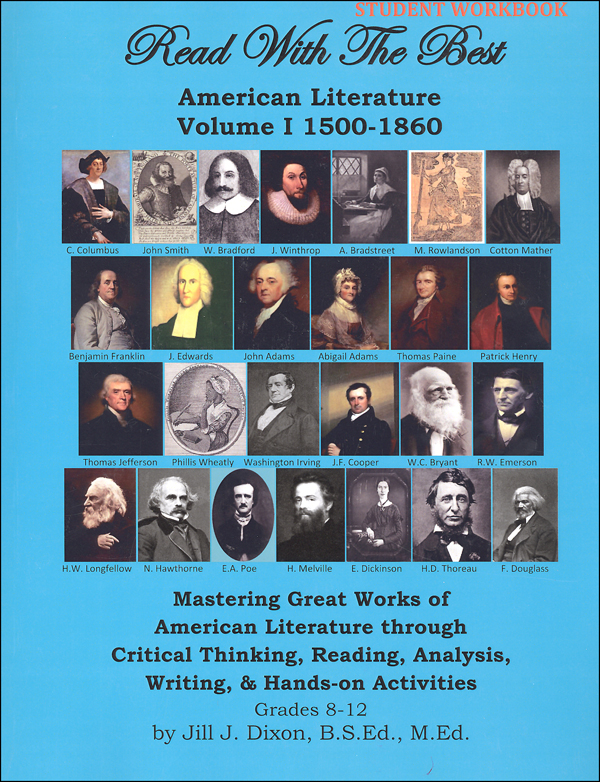You expect an excellent college-prep high school literature course to provide exposure to a comprehensive cross-section of literature, serious vocabulary study, extensive literary analysis, thorough reading comprehension coverage, and insightful writing instruction and assignments. This course delivers! With its emphasis on vocabulary and composition, it provides prep for the SAT/ACT as well as the AP Literature Exams or the Literature CLEPs. The author has chosen to divide American Lit into two years instead of the typical one in order to provide more thorough author/works coverage, noting that many of these works provide excellent vehicles for the introductory literature and composition skills usually found in first year high school courses. Interestingly, there is enough background research required that each course can also be counted as a 1/4 credit in American history.
Read with the Best (RWTB) coordinates with Write with the Best (WWTB) (by the same author, Jill Dixon). Volume 1 is occasionally referenced but Volume 2 is heavily drawn from to provide instruction and illustration for writing assignments in RWTB. What that means in practical terms is that for some of the writing assignments in RWTB, the student is told to read specific pages in WWTB and complete a series of daily assignments from WWTB leading to a particular type of written work.
The course is organized into 34 weekly study units which include one or more literature selections. The two remaining weeks are reserved for review and tests. Each selection's study includes author/setting background information (student researches); a "Words to Know" section that requires the student to determine the part of speech, provide synonyms, and use in sentences; and questions for both literary analysis and critical reading. Each week the student is challenged to "make it real." For instance: "Think of two examples of foils in literature or movies" or "Name at least one stereotype or stock character that Irving portrays in Rip Van Winkle." Writing assignments are also part of each week's study. As previously mentioned, these are typically coordinated with Write with the Best. There is also a weekly "culminating activity". These activities vary greatly but tend to be more hands-on and often something that will be more meaningful and fun if done in a group. Vocabulary and Literary Terms Tests are given every six weeks.
Many of the literature selections are taken from Norton Anthologies although they can also be found online. Additionally, one or more whole book studies are covered in each course. For the British Literature course, the author highly suggests that parents or students access audio versions of all literary works online or purchase them in audio format, noting that many can be downloaded free from the Internet.
The Student Worktext is consumable and designed to provide both an excellent study tool and comprehensive test-prep review material. Introductory material and a weekly schedule (in the form of a checklist) communicate to the student the course's independent study nature. Writing space for all assignments is provided although some students may prefer to complete the composition assignments on the computer.
The Teacher's Edition is essentially a full-text answer key but also includes vocabulary and literary terms test masters (reproducible for family) along with their answer keys. There is also a research paper checklist that can be reproduced for the student.
Born out of the author's experience teaching a home school literature class, these books are ideal for classes and co-ops, providing a good vehicle for meaningful discussion and skill mastery: essay-writing, oratory, etc. ~ Janice


